It demands 30 inches for elbow room directly in front (sidetoside) of the electrical equipment This clearance requirement must not be confused with the 3footminimum rule outlined in Table (A)(1) The clearances in Table (A)(1) deal with two voltage levels 0 to 150 volts and more than 150 to 600 voltsNFPA 70 (NEC) Table (A)(1) The working space for Condition 2 (Exposed live parts on one side of the working space and grounded parts on the other side) is 3'6" for V This would apply to the circuit breaker and electrical power enclosure There should be clearance to open the doors on the generator for servicingWidth of working space around electrical equipment NEC (A)(2) Working space around electrical equipment must be as wide as the equipment or 30 inches, whichever is greater Height of working space around electrical equipment NEC (A)(3) For installations built before , the height of the working space must be 625 ft

Building Code Guidelines For Electrical Inspections City Of Ocala
Nec 110.26 working clearance table
Nec 110.26 working clearance table- In an existing installation, a 4160 VAC 2section Metal Clad Switchgear has 42" working clearance to a grounded wall in the rear Switchgear contains generator breaker/protective relaying/transformer protection for a distributed generation facility I originally thought this was a violation of Table (A) condition 2 which would require 5 The National Electrical Code Section (A) Working Space states in part, "Working space for equipment operating at 600 volts, nominal, or less to ground and likely to require examination, adjustment, servicing, or maintenance while energized"



Http Tazewellcountyva Org Wp Content Uploads 16 01 11 Nec 12 Irc Electrical Code Changes Pdf
If you read Section (NEC05) you will observe that the disconnecting means requires a minimum amount of working space The working space is defined in all three dimensions depth, width, and height Some of the working space requirements found in SectionTable (A)(1) Working Space VoltagetoGround Condition 1 Condition 2 Condition 3 0–150V 3 ft 3 ft 3 ft 151–600V 3 ft 3½ft 4 ft • Condition 1—Exposed live parts on one side of the working space and no live or grounded parts, including concrete, brick, or tile walls are on the other side of the working space(2) Large Equipment For equipment rated 10 amperes or more and over 18 m (6 ft) wide that contains overcurrent devices, switching devices, or control devices, there shall be one entrance to and egress from the required working space not less than 610 mm (24 in) wide and m (6 ½ ft) high at each end of the working space
2) a 30 in wide working space in front of equipment operating at 600V or less; of the NEC gives the clearances for electrical equipment Table (A)(1) gives the depth In this table for voltages of 150 to ground we must have 36 inches of depth (A) (2) Width of Working Space The width of the working space in front of the electric equipment shall be the width of the equipment or 750 mm (30 in All questions and answers are based on the 08 NEC Q I have a 1,0A, 480V panel that has a working space of 3½ feet The engineer says 7 feet is required Is he correct?
Photo 1 Code violation of The definition of equipment in the NEC is "a general term, including fittings, devices, appliances, luminaires, apparatus, machinery, and the like used as a part of, or in connection with, an electrical installation" This is a very broad definition, and when put in the context of working space requirements, likely includes many items not usually thought Working Space Clearance is dependent on parameters listed in Article for electrical equipment under 1000 Volts In designing electrical equipment under 1000 volts, the Working Space Width is 30 inches, the Working Space Height is 78 inches and Working Space Depth is based on conditions and voltages listed in Table (A) (1) NEC requires working clearance in front of equipment likely to require calibration, testing, or adjustment while energized This means a 30 by 36 inch space (or larger) in front of panels, access panels on HVAC equipment and fused disconnects Does this requirement extend to non




General Installation Requirements Part Xxxv Article 110 Electrical Contractor Magazine




Working Space Requirements For Electrical Panelboards Iaei Magazine
In many installations, there are switchgear sections on opposite sides of a shared working space In such situations, the Condition 3 working space of Table (A)(1) would normally apply because work can be performed on both sides of the workspace simultaneously NEC article (A) (1) condition 3 states that exposed live parts on both sides of the working space require minimum clear distance of 4ft NEC does not explain the dead front panel working space requirements between panels Under all circumstances, there are no live parts exposed to persons entering the electrical room Of course the first place to start is with National Electrical Code required workspace clearances, found in NEC Section and Table (A)(1) The requirements in these sections were expanded in the last NEC code cycle to apply up to 1000V, whereas in the 14 NEC requirements for over 600 volts were in a separate Section, and



Www Nfpa Org Assets Files Aboutthecodes 70 70 016 Nec Frreport Pdf
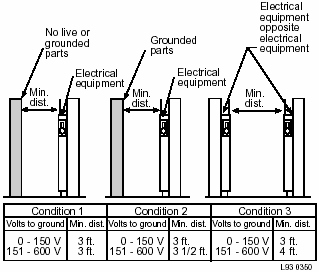



Doe Handbook Electrical Safety General Requirements Rf Cafe
NEC Table , updated from 600 V to 1000 V in 17 Minimum clearances are established for work spaces in front of high voltage electrical equipment such as switchboards, control panels, switches, circuit breakers, switchgear and motor controllers (1) Depth of Working Space The depth of the working space in the direction of live parts shall not be less than that specified in Table (A)(1) unless the requirements of (A)(1)(a), (A)(1)(b), or (A)(1)(c) are met Distances shall be measured from the exposed live parts or from the enclosure or opening if the live parts are enclosed NEC Workig Clearance Requirements NEC Workig Clearance Requirements enverd (Electrical) (OP) 7 Jun 12 1106 Reviewing A1 and associated table the working space depth is clear on its requirements




Electrical Panel Clearance Issues Electrical Inspections Internachi Forum



Www Mikeholt Com Instructor2 Img Product Pdf 11nec101 1076 Sample Pdf
Reference National Electrical Code (NEC) Table (A)(1)) Condition 1—Exposed live parts on one side of the working space and no live or grounded parts, including concrete, brick, or tile walls are on the other side of the working space(A)(1) describes the minimum clear distance required in front of electrical equipment, and is broken down into three categories according to the nominal voltage to ground in Table (A)(1) and the conditions encountered on each side of the working space For example if we have a 8 volt panel on one side and a bareWork Space and Guarding The requirements of are conditional, just like the requirements in ;




Afpm Summit Nec Revision Reduced Risk For Electrical Workers




Nec 17 Code Changes Update
The minimum width of the working space is 30 in or the width of the equipment, whichever is greater, and all doors or panels must be able to open to 90 degrees or more This is the same as the general requirement found in (A)(2) Section (3) (12/7/17) NEC08, section , (3) requires that personnel doors for entrance to electrical rooms housing equipment rated 10A and greater open in the direction of the egress and be provided with panic hardwareNEC Table (A) (1), Working Spaces, is a very useful table that details these measurements (see figure 2) The "Conditions" located beneath the table are very informative in order to apply the requirements properly Figures 3, 4, and 5 are also very beneficial towards your understanding of these working space depths Figure 3
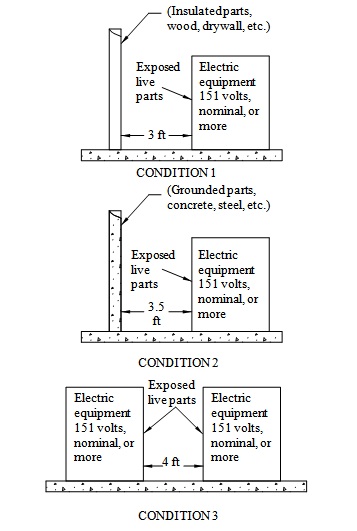



Consulting Specifying Engineer Integrated Design Of Electrical Rooms



Www Rockymountainpower Net Content Dam Pcorp Documents En Pp Rmp Electric Service Requirements Esr Ch4 Pdf
Controls is how to meet the required working clearance of electrical equipment as outlined by the National Electrical Code (nec ) table (a)(1) provides the minimum required working space depth for electrical equipment rated volts (to ground) that is likely to be examined or worked on while energizedThe national electric code • nec • adopted by the louisiana legislature as law • not a design manual • is a minimum standard nec article working space shall be provided and maintained about all electric equipment likely to require while energized working space shall be of the National Electrical Code (NEC) 1) at least a 3ft clearance in front of all electrical equipment;




110 32 Workspace About Equipment




How Much Working Space Is Enough Ec M
That is, some of the requirements are applicable only where the equipment "is likely to require examination, adjustment, servicing, or maintenance while energized" (A) Working SpaceSpaces About Electrical Equipment Access and working space are required around all electrical equipment to allow safe operation and maintenance (A) Working Space Equipment likely to require examination, adjustment, servicing, or maintenance while energized must have working space in accordance with (A)(1) through (A)(4) Height of working space Sec (a) (3) (e) As a general rule, you must maintain a minimum headroom clearance of 6 ft from the floor or platform up to any overhead obstruction This workspace is mandatory and applies to service equipment, switchboards, panelboards, and motor control centers




Working Space Requirements For Electrical Panelboards Iaei Magazine
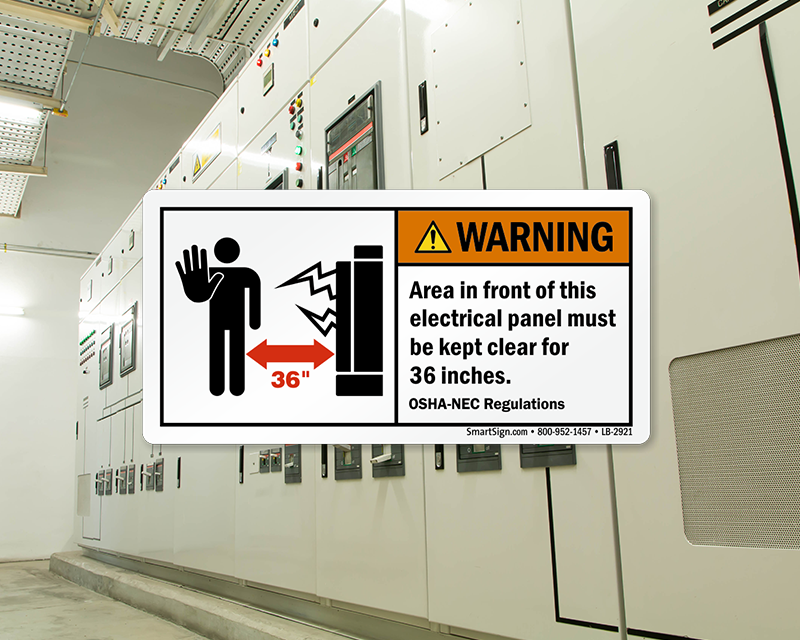



Minimum Clearance Around Electrical Panels Carrying 600 Volts Or Less Mysafetysign Blog
NEC It is obvious from reading and that working space has three dimensions (a cube) that consists of depth (according to the table), width, and height This can be visualized as a large box, carton or crate that consists of the required dimensions The depth and width of the working space can be I was recently asked about rework in circa 1970 highrise apartment by an owner who wants to spec out a scopeof work It has a common limitation of the time, a 40 Amp 2 feed (meter and main breaker in basement with all the others), and a small panel in kitchen see pix The owner cleverly• What's the right working clearance for a given installation?



Www Mikeholt Com Instructor2 Img Product Pdf 11nec101 1076 Sample Pdf



Panel Clearances Electrician Talk
Clearance Tables Working Space around Indoor Panel/Circuit Board (NES 3122) Clearance around an Indoor electrical panel (NEC ) Clearance for Conductor Entering in Panel (NES 4085) Clearance between Bare Metal Busbar in Panel (NES 4085) Clearance of Outdoor electrical panel to Fence/Wall (NES )Answer # 1 NEC (A) (1) & (2) Yes, this may be a problem Meter Sockets require the same working clearances as electrical distribution per NEC (A) (1) & (2) Most utility meter manuals throughout Wisconsin also require the same clearances specified in NEC for meter sockets As an option, NECAs shown in Table 10 of Chapter 9, must be identified for the conductor class Figure 110–6 12 Mike Holt's Illustrated Guide to Essential Rules of the National Electrical Code, Based on the 11 NEC
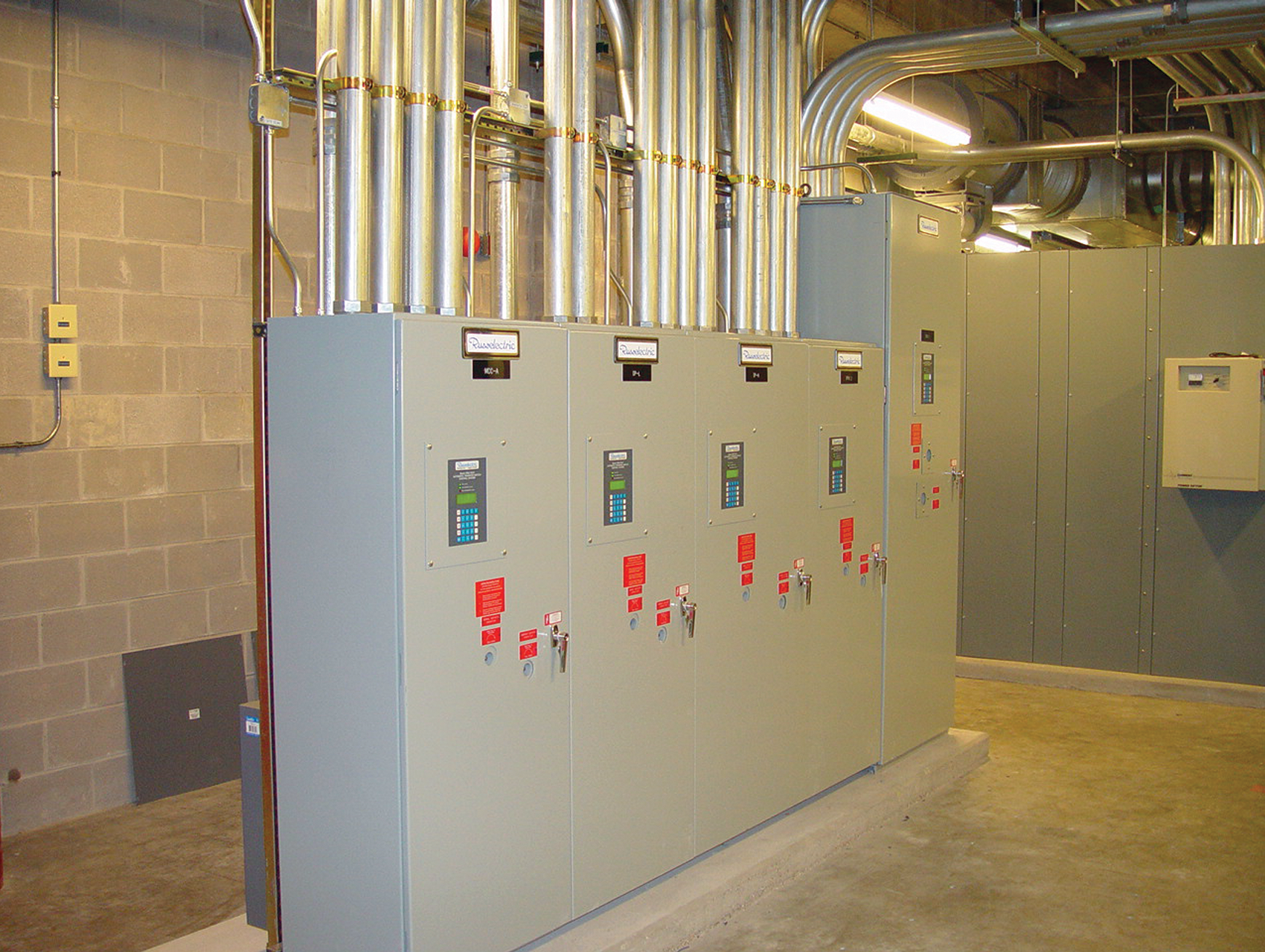



Working Space For Electrical Equipment Iaei Magazine




General Requirements For Wiring Installations Mcgraw Hill Education Access Engineering
___ NEC 1103(B) – Overcurrent devices shall be listed for the panelboard they are installed in ___ NEC (A) – The working space about electrical service panel/subpanel shall be at least 3 ft in front of the electrical panel The width of the working space shall be 30" or greater, and the height of the space shallEgress and working space for rooms containing electrical overcurrent devices, switching devices, or control devices shall be in compliance with the International Fire Code and Section of NFPA 70 Background 15 IFC 6053 Working space and clearance A working space ofnot less than 30 inches (762 mm) in width, 36Note For clearances of conductors for specific system voltages and typical BIL ratings, see ANSI C7, National Electrical Safety Code (A) Electrical Vaults Where an electrical vault is required or specified for conductors and equipment operating at over 600 volts, nominal, the following shall apply (1) Walls and Roof



Www Ltrc Lsu Edu Ltc 11 Pdf National electric code clear workspace requirements Pdf



Www Eaton Com Content Dam Eaton Products Medium Voltage Power Distribution Control Systems Vacclad W Pages Electrical Equipment Floor Space Ap0007en Pdf
4 A minimum of 3 feet must be provided in front of all metering installations See NEC (A) 5 All 100 Amp or 0 Amp meter sockets shall contain the horntype bypass for singlephase or network installations, be ringless, UL listed, and not have covers over the meters 6 6'6" OH headroom working space required per NEC (A) 7And 3) minimum headroom clearance of 6 ft or the height ofGreetings Mr Design Engineer, Thank you for submitting your question with regards to the proper application of section (2)(a) as it pertains to establishing a compliant and safe single entrance to and egress from large electrical equipment rated 10 amps or more and over 6 feet wide that contain overcurrent devices, or control devices, or switching devices The general rule



Www Rockymountainpower Net Content Dam Pcorp Documents En Pp Rmp Electric Service Requirements Esr Ch4 Pdf




Adequate Workspace Keeps Electricians Safe Ec M
To gain adequate clearance to avoid harm from the live parts A few key NEC articles that address this issue are Article —Requires that sufficient access and working space shall be provided and maintained around all electrical equipment to permit ready and safe operation and maintenance of such equipment3051 Working space and clearances Figure 3051 Working space and clearances Footnote a (f) Footnote b (e) Table Branchcircuit requirement— summary Table 02 IRC NEC Cross Reference Date IRC Section Section Title NEC SectionBrief description of NEC national electric code working clearances article (A)(1) for the Electrical Exam Academy Study guide
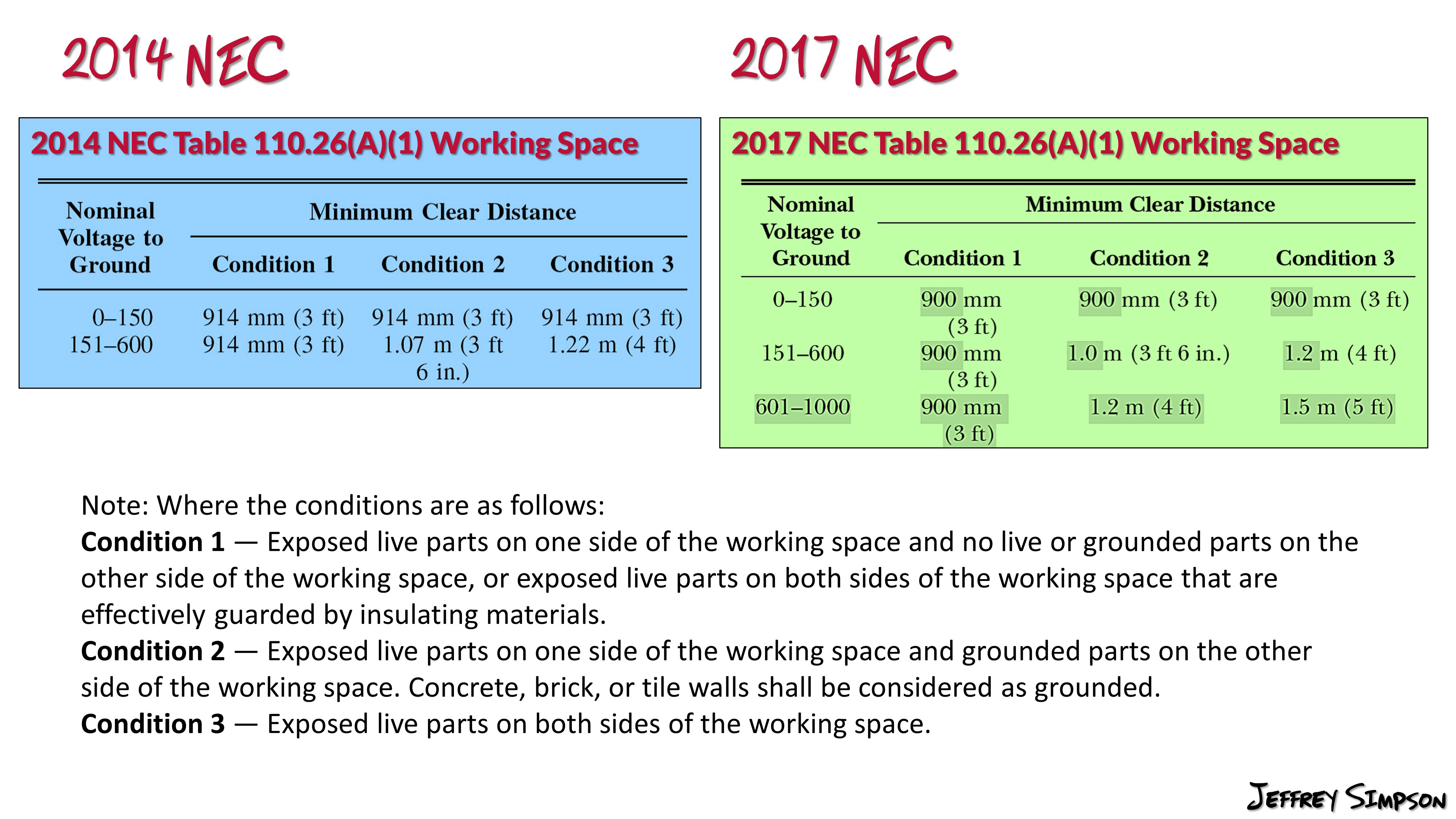



Table 110 26 A 1 Working Spaces



Www Mikeholt Com Instructor2 Img Product Pdf 11nec101 1076 Sample Pdf
This is a problem with the code wording in The counter top receptacles the are required by are in violation of The CMP has been very reluctant to accept any changes in the wording of This section really needs some work as inArticle Requires that sufficient access and working space shall be provided and maintained around all electrical equipment to permit ready and safe operation and maintenance of such equipment Table (A) Defines requirements for minimum depths for working space in lowvoltage (0 600 V) installationsA Maybe The working space, which is measured from the enclosure front, must not be less than the distances contained in Table (A)(1)



Www Mikeholt Com Instructor2 Img Product Pdf 11nec101 1076 Sample Pdf




Transformer Installation Page 3
Minimum clearances in front of electrical equipment (600 V (now V) or more); Sections and of the NEC require working clearance in front of any equipment that may require examination, adjustment servicing, or maintenance while energized This requirement, intended to allow an electrician to safely work on energized equipment, applies to switchgear, distribution panels, motor control centers, standalone
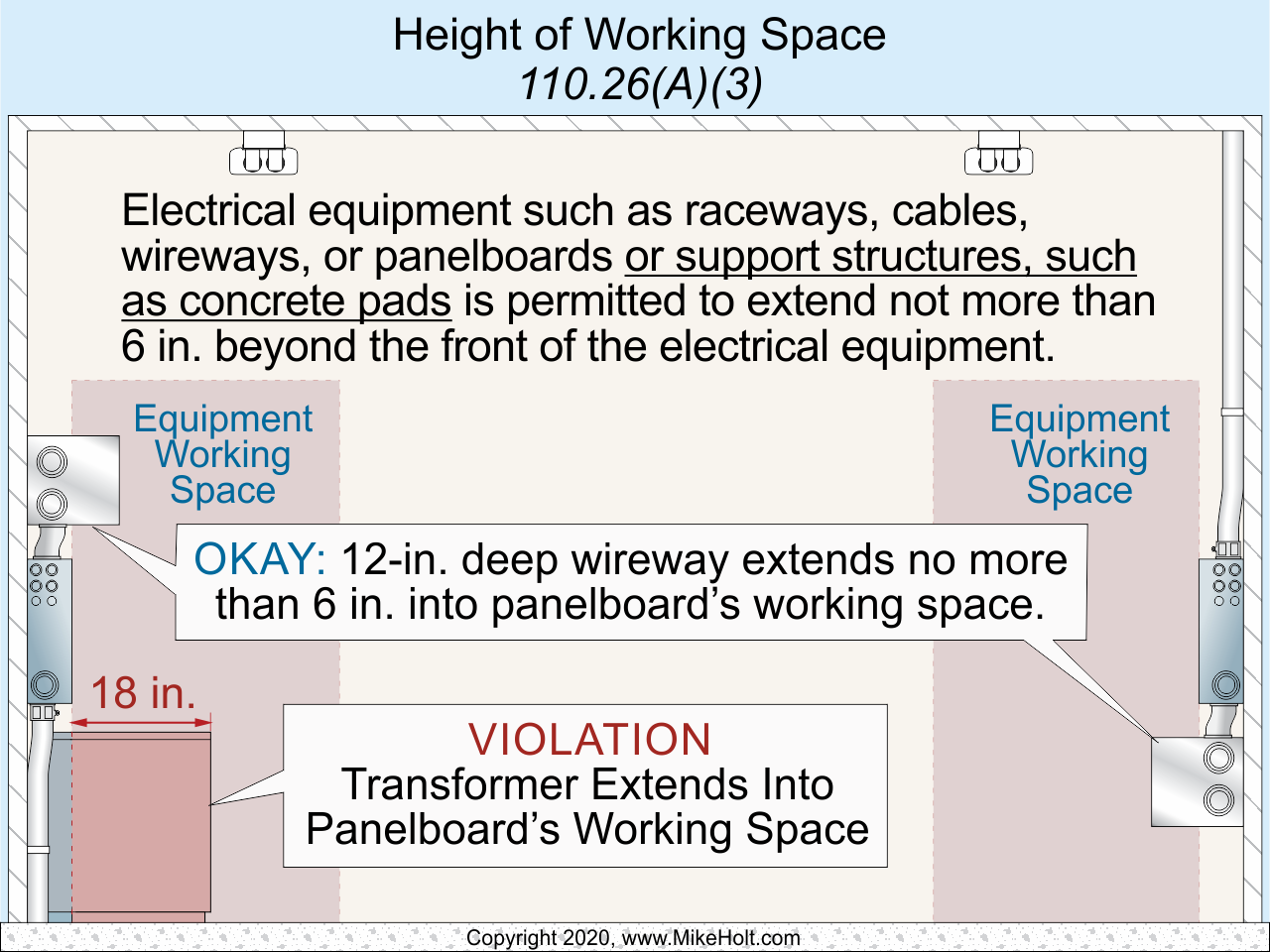



General Requirements Of The Nec Ec M



Http Tazewellcountyva Org Wp Content Uploads 16 01 11 Nec 12 Irc Electrical Code Changes Pdf




Electrical Code Academy Inc Blog Master The Nec December 16



Www Mikeholt Com Instructor2 Img Product Pdf 17bk 1474 Sample Pdf




Working Space Requirements For Electrical Panelboards Iaei Magazine



1




General Installation Requirements Part Xviii Electrical Contractor Magazine



Www Mikeholt Com Instructor2 Img Product Pdf 11nec101 1076 Sample Pdf



Www Mikeholt Com Instructor2 Img Product Pdf 11nec101 1076 Sample Pdf



Panel Clearances Electrician Talk




Electrical Panel Clearance Requirements The Garage Journal



Www Rockymountainpower Net Content Dam Pcorp Documents En Pp Rmp Electric Service Requirements Esr Ch4 Pdf




National Electrical Code Nec Articles Tables And Data Mcgraw Hill Education Access Engineering




Electrical Code Academy Inc Blog Master The Nec December 16
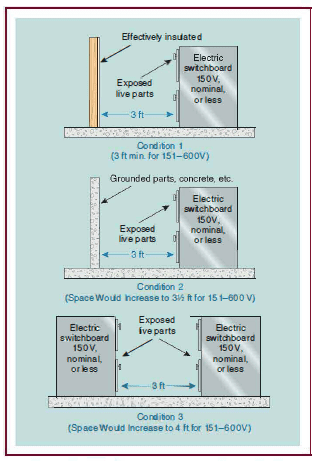



Where Can Panelboards And Load Centers Be Located In My Building Wgi




Working Space Requirements For Electrical Panelboards Iaei Magazine



2




Building Code Guidelines For Electrical Inspections City Of Ocala
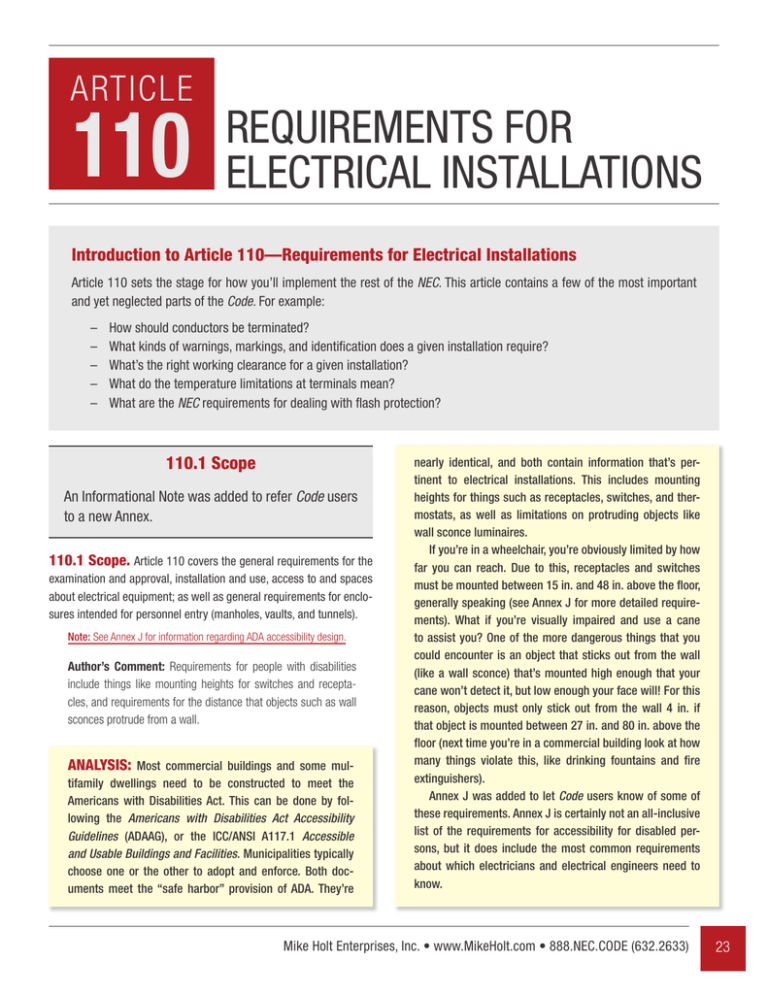



Sample Pages
.jpg?width=900&name=Electrical%20Room%20(2).jpg)



Nec Article 110 34 Electrical Room Basics Electrical Equipment Rated At 1 000 V Or More Article 3 Of 3




General Installation Requirements Part Xxii Electrical Contractor Magazine




Current Affairs Keep In The Clear



Q Tbn And9gcqkkcyyfzdwu78lzw9uw5uk5tgqnn1j93hjfqj2 2myghfchgsv Usqp Cau
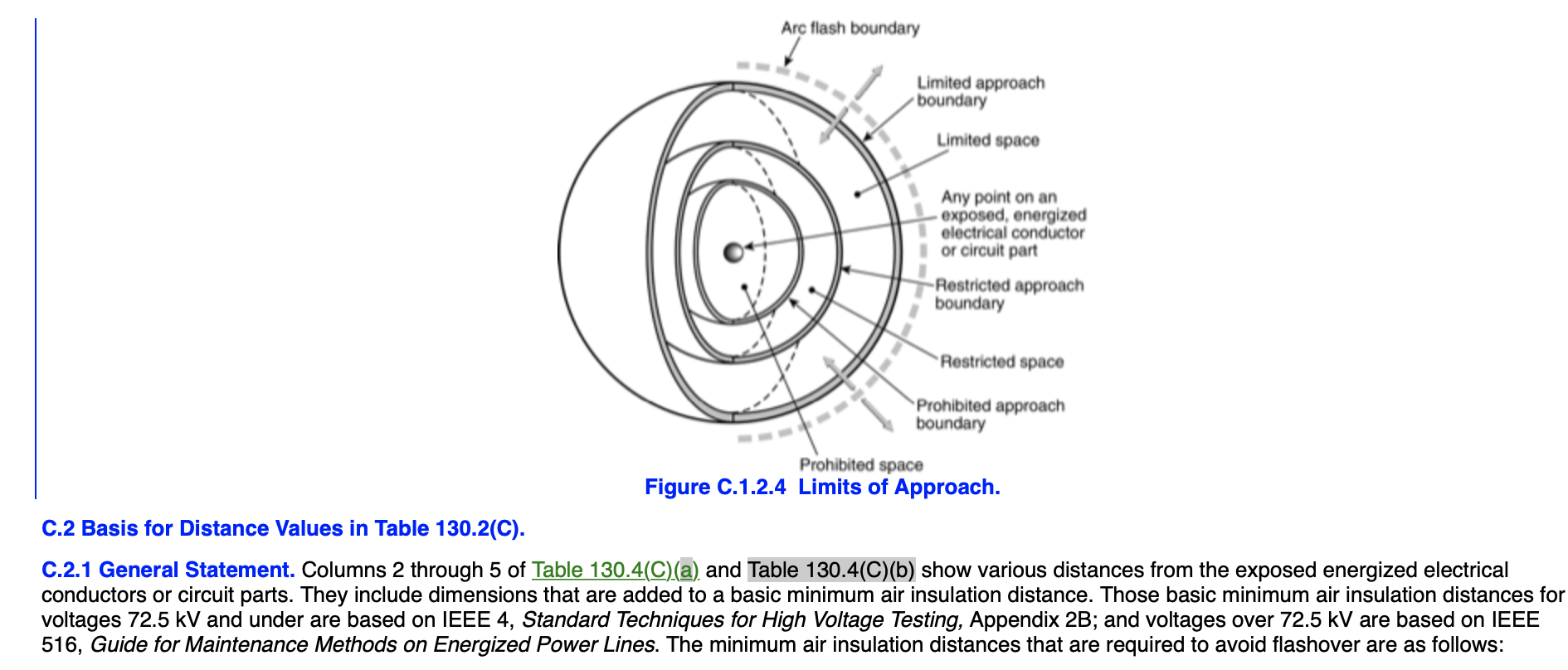



Electrical Safety Limits Of Approach 70e Phoenix Arizona
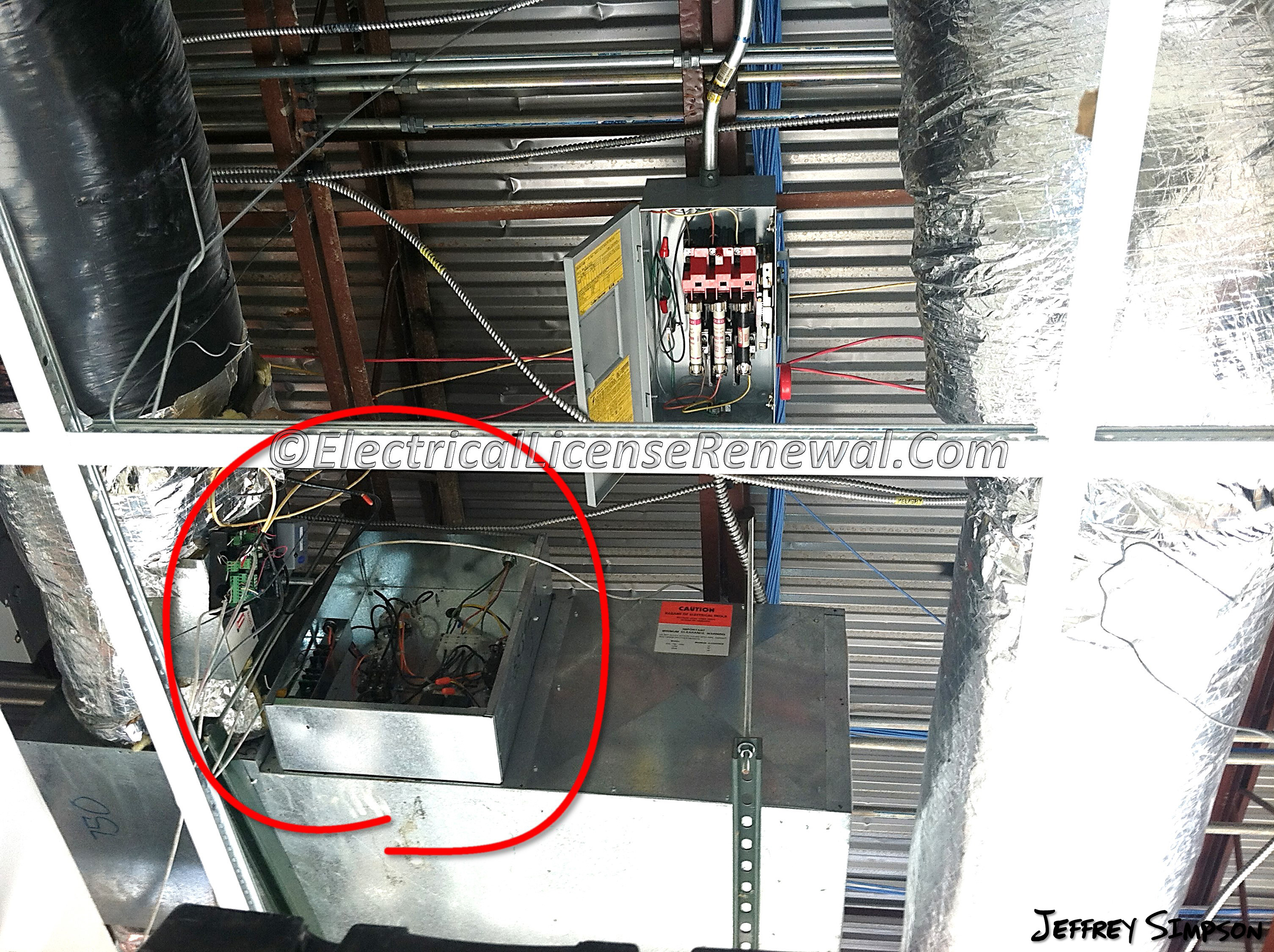



110 26 A 4 Limited Access




Nec Working Clearance Youtube



Ewh Ieee Org R3 Atlanta Ias 16 17 Presentations 17 03 09 Ieee atl Rb Nec17 Pdf




Working Space For Electrical Equipment Iaei Magazine



Oshpd Ca Gov Document Seminar Electrical



Www Mikeholt Com Instructor2 Img Product Pdf 11nec101 1076 Sample Pdf




Working Space Requirements For Electrical Panelboards Iaei Magazine



Www Eaton Com Content Dam Eaton Products Medium Voltage Power Distribution Control Systems Vacclad W Pages Electrical Equipment Floor Space Ap0007en Pdf




Equipment Location And Clearances Upcodes




Codeology Nec Code Book Arrangement Flashcards Quizlet



Www Mikeholt Com Instructor2 Img Product Pdf 11nec101 1076 Sample Pdf
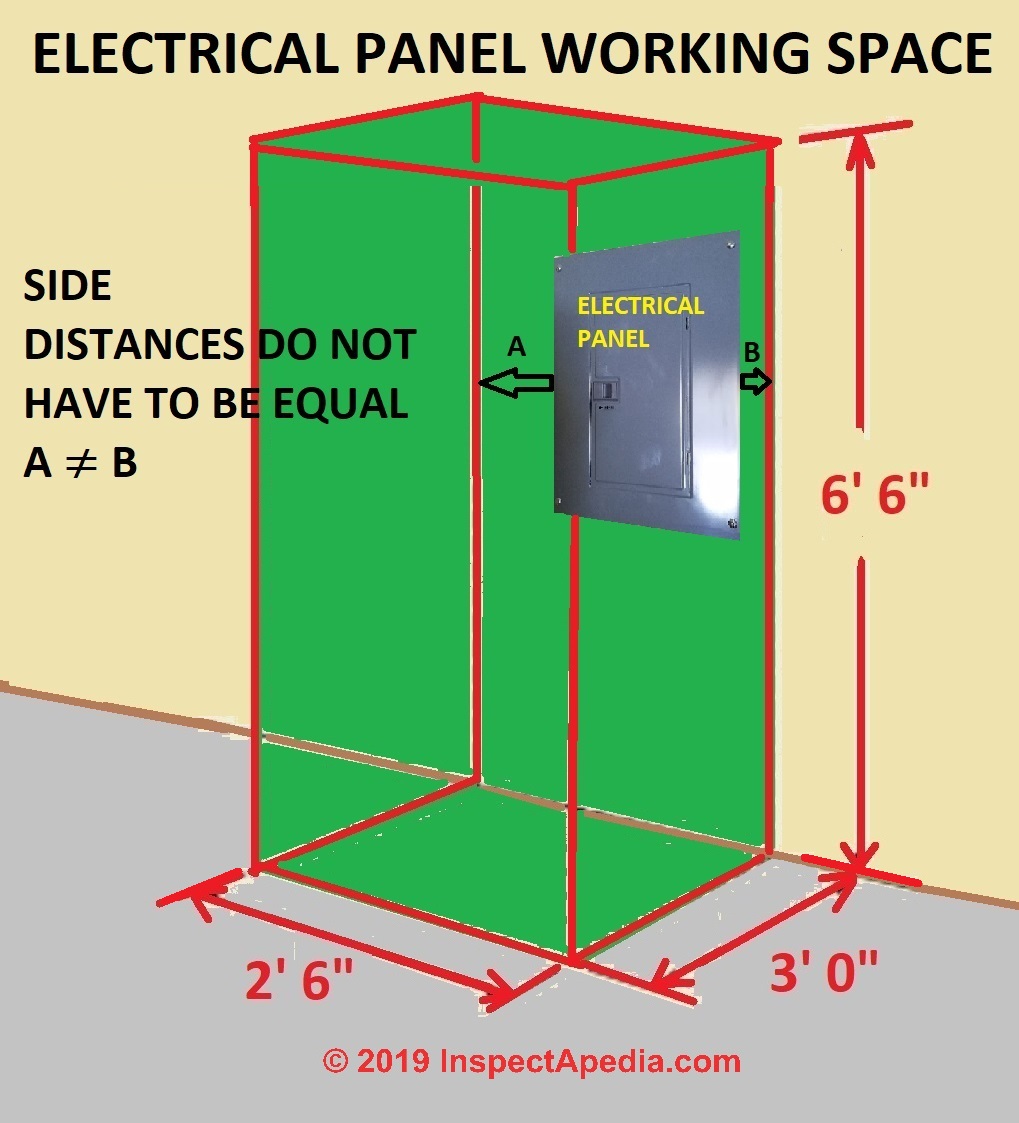



Electrical Panel Equipment Working Space Clearance Distances U S Nec Article 110 26



Www Ameren Com Media Illinois Site Files Construction Services Ilohreselectinstall Pdf La En Hash d2d0da7ba1d91baa9fdb5d43f3dd
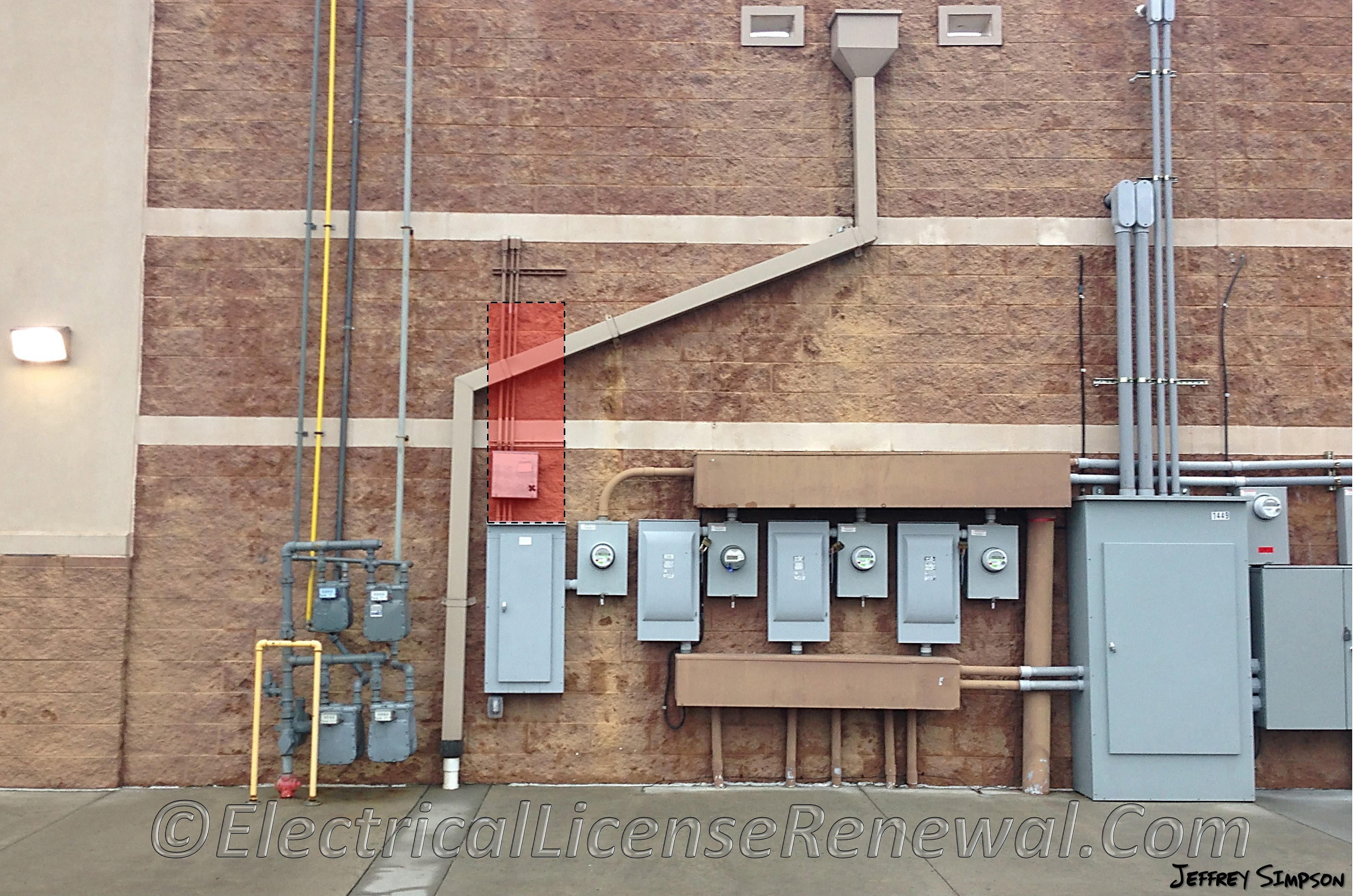



110 26 E 2 Dedicated Equipment Space Outdoors



Www Mikeholt Com Instructor2 Img Product Pdf 11nec101 1076 Sample Pdf




Electrical Faq S
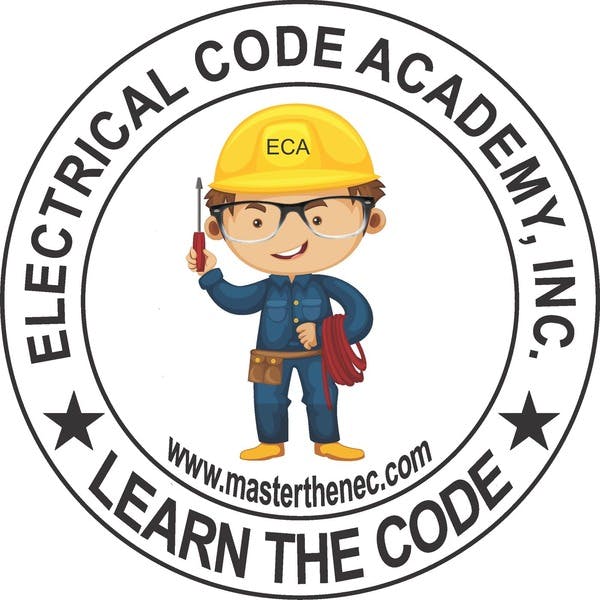



Master The Nec Podcast On Stitcher



Oshpd Ca Gov Document Seminar Electrical




Chapter One Mcgraw Hill Education Access Engineering



Www Jadelearning Com Wp Content Uploads 03 Ipj4oh 17necpt1 Pdf



Art109




How Much Working Space Is Enough Ec M



Nec Article 6 11 50 15 54 Asme A17 Series Of Elevators Escalator Standards



Www Mikeholt Com Instructor2 Img Product Pdf 11nec101 1076 Sample Pdf
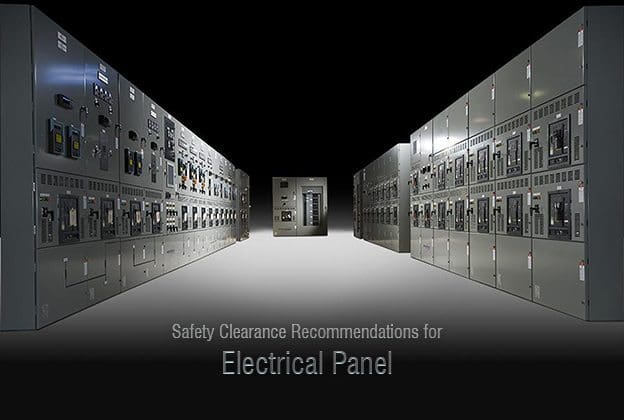



Safety Clearance Recommendations For Electrical Panel



1




Electrical Panel Equipment Working Space Clearance Distances U S Nec Article 110 26



Http Www Teces Org Docs 443 Pdf



Www Ltrc Lsu Edu Ltc 11 Pdf National electric code clear workspace requirements Pdf
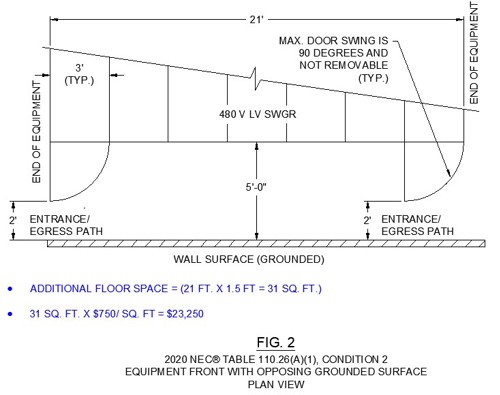



Afpm Summit Nec Revision Reduced Risk For Electrical Workers



Www Mikeholt Com Instructor2 Img Product Pdf 11nec101 1076 Sample Pdf



Oshpd Ca Gov Document Seminar Electrical




Working Space About Electrical Equipment Nec 14 110 26 23min sec Youtube




Doe Handbook Electrical Safety General Requirements Rf Cafe



Washington State Register
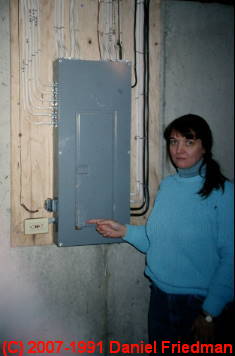



Electrical Panel Equipment Working Space Clearance Distances U S Nec Article 110 26



Art109



Panel Clearances Electrician Talk



Seips Tech Tips Workspace Clearances For Solar Pv Systems Sei Professional Services




5 Nec Questions Based On The 14 Nec By Mike Holt Texas Electrical Excel
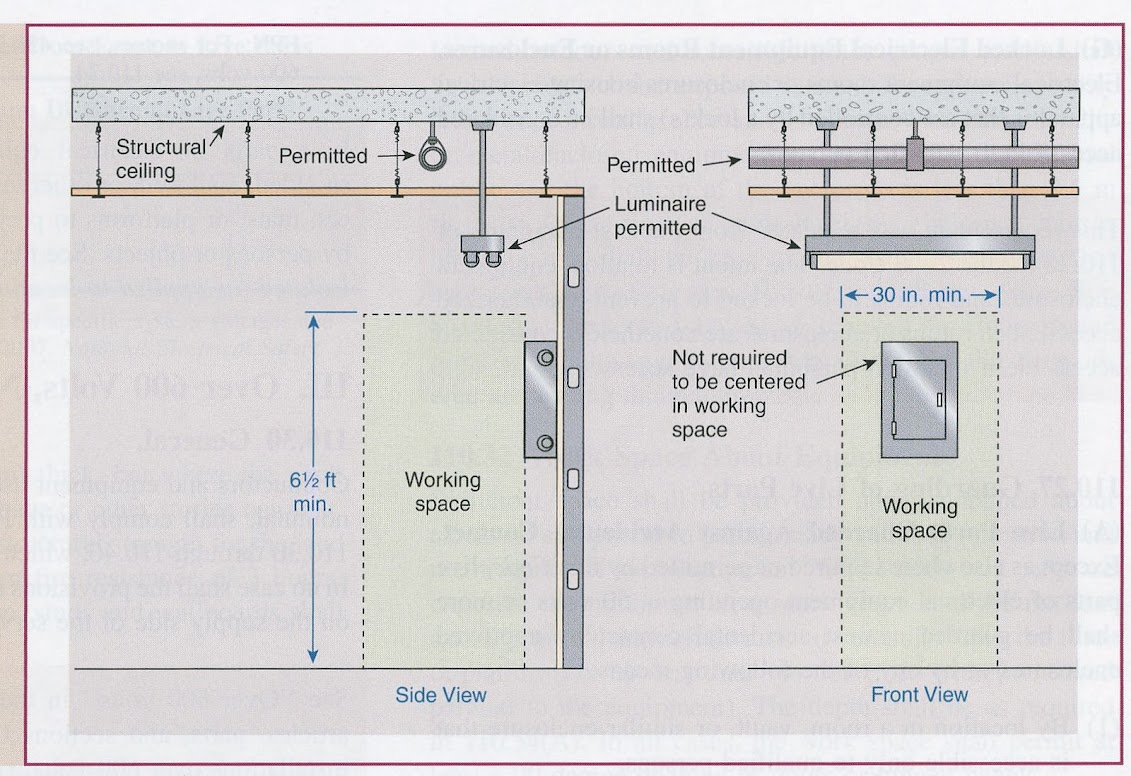



Inspectionnews Home Inspection



1
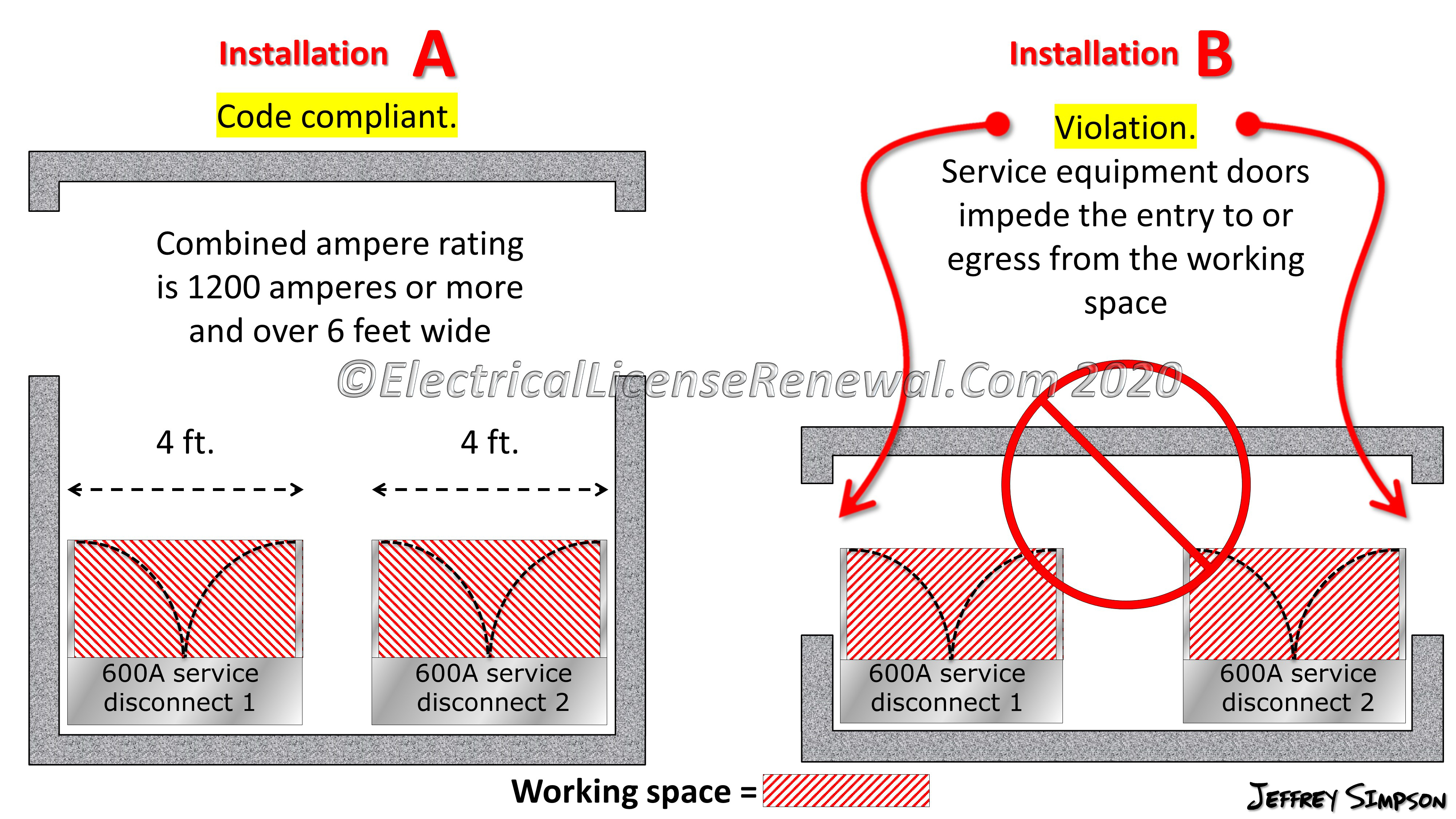



110 26 C 2 Large Equipment




National Electrical Code Nec Articles Tables And Data Mcgraw Hill Education Access Engineering
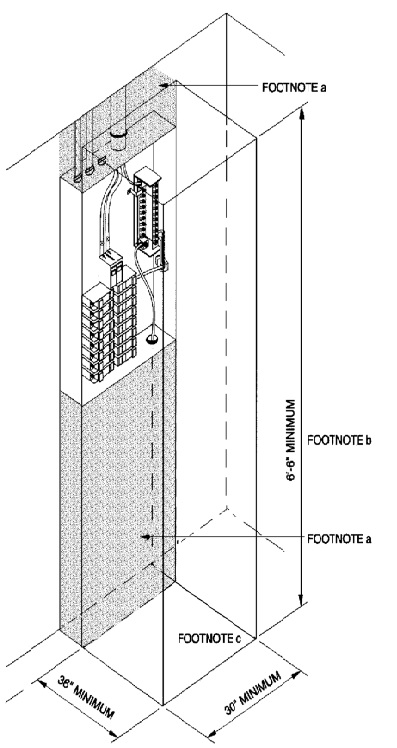



15 Virginia Residential Code Icc Digital Codes
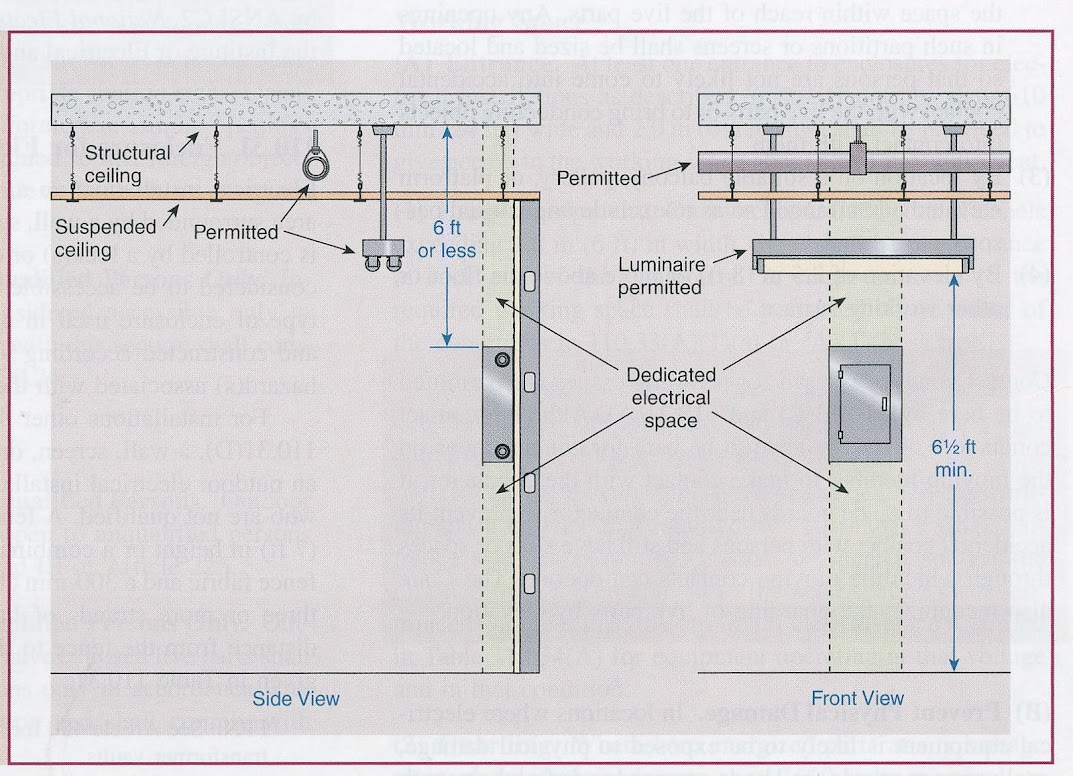



Inspectionnews Home Inspection




Working Space For Electrical Equipment Iaei Magazine




Working Space For Electrical Equipment Iaei Magazine




General Installation Requirements Part Xxxv Article 110 Electrical Contractor Magazine



Http Www Teces Org Docs 443 Pdf
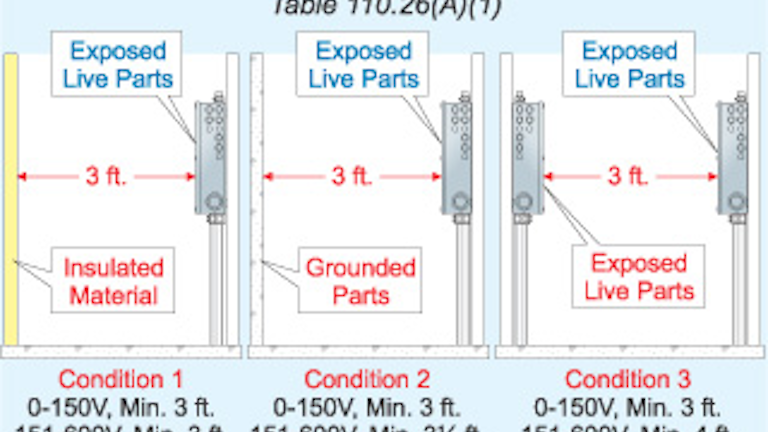



Adequate Workspace Keeps Electricians Safe Ec M
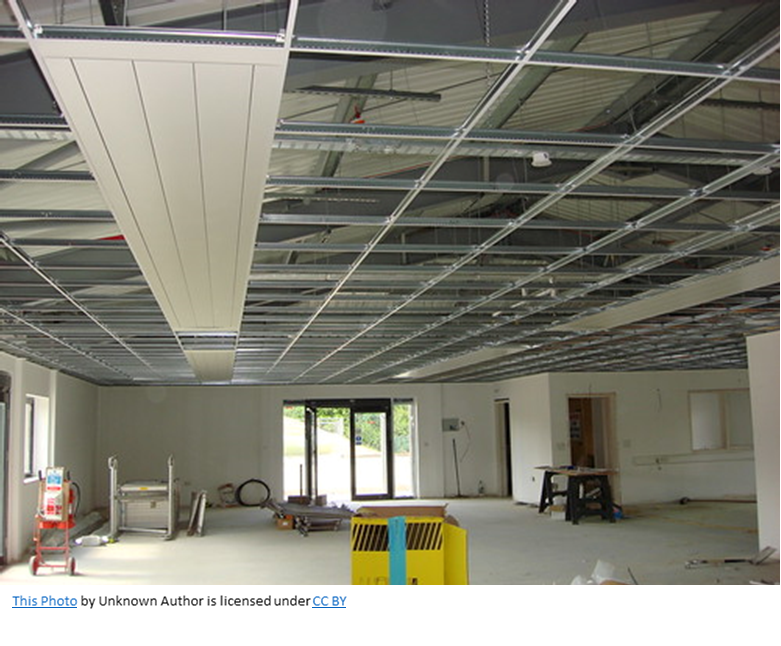



New Rules For Spaces With Limited Access Nec 17 110 26 A 4 Jade Learning



Working Clearance Electrician Talk




Dedicated Equipment Space Nec 110 26 E 1 And E 2 Part 1 Of 3 Youtube



0 件のコメント:
コメントを投稿